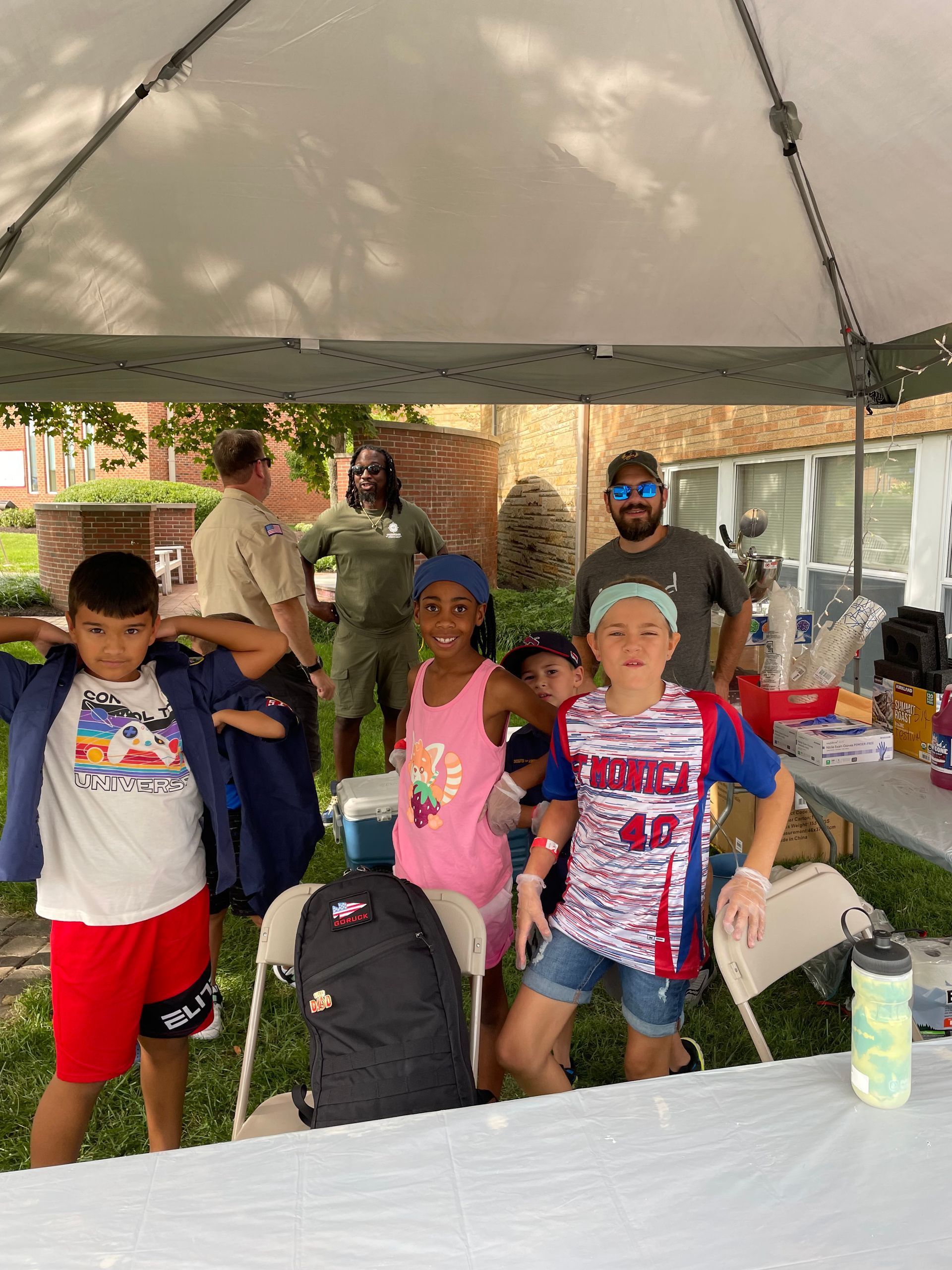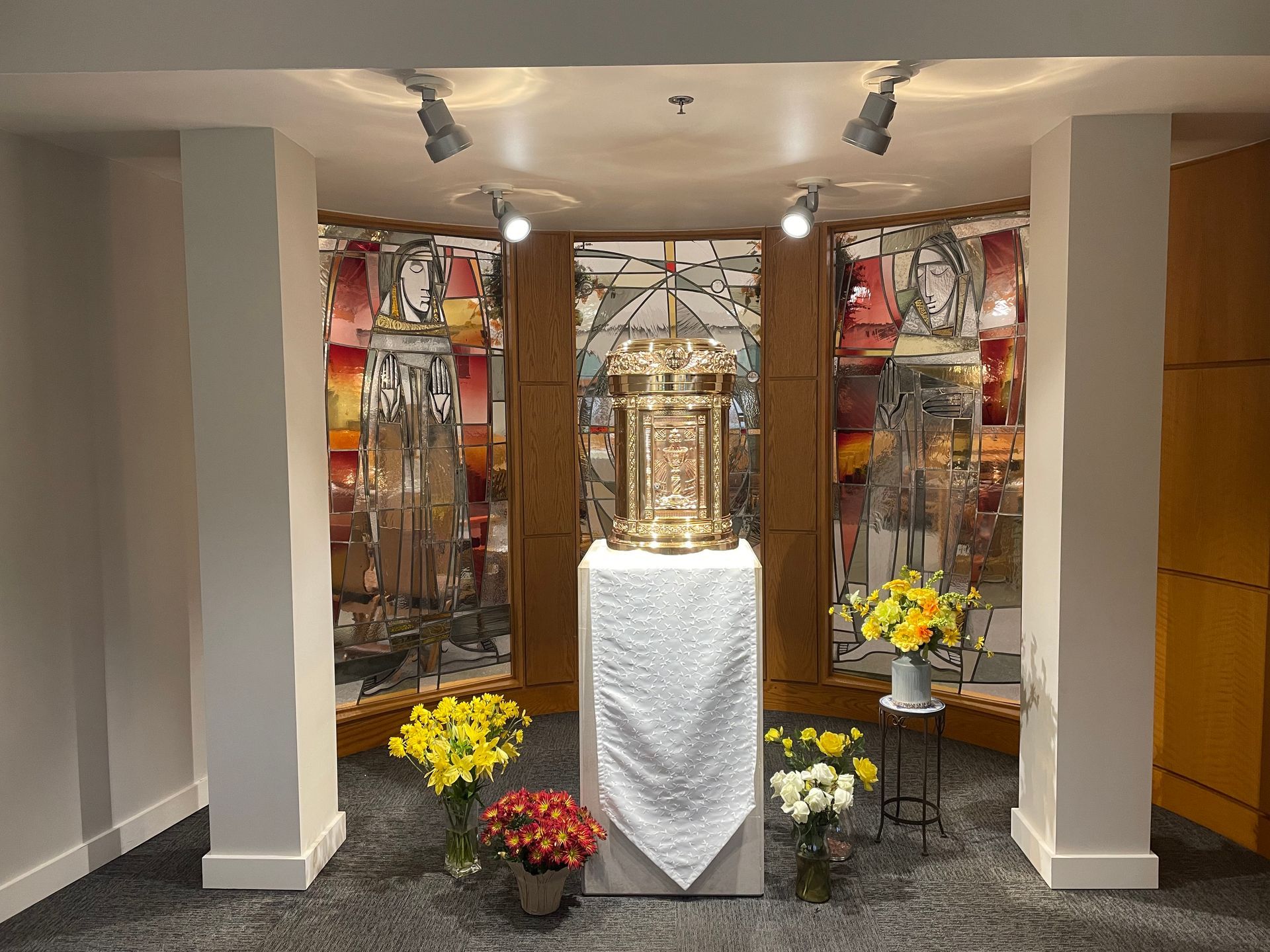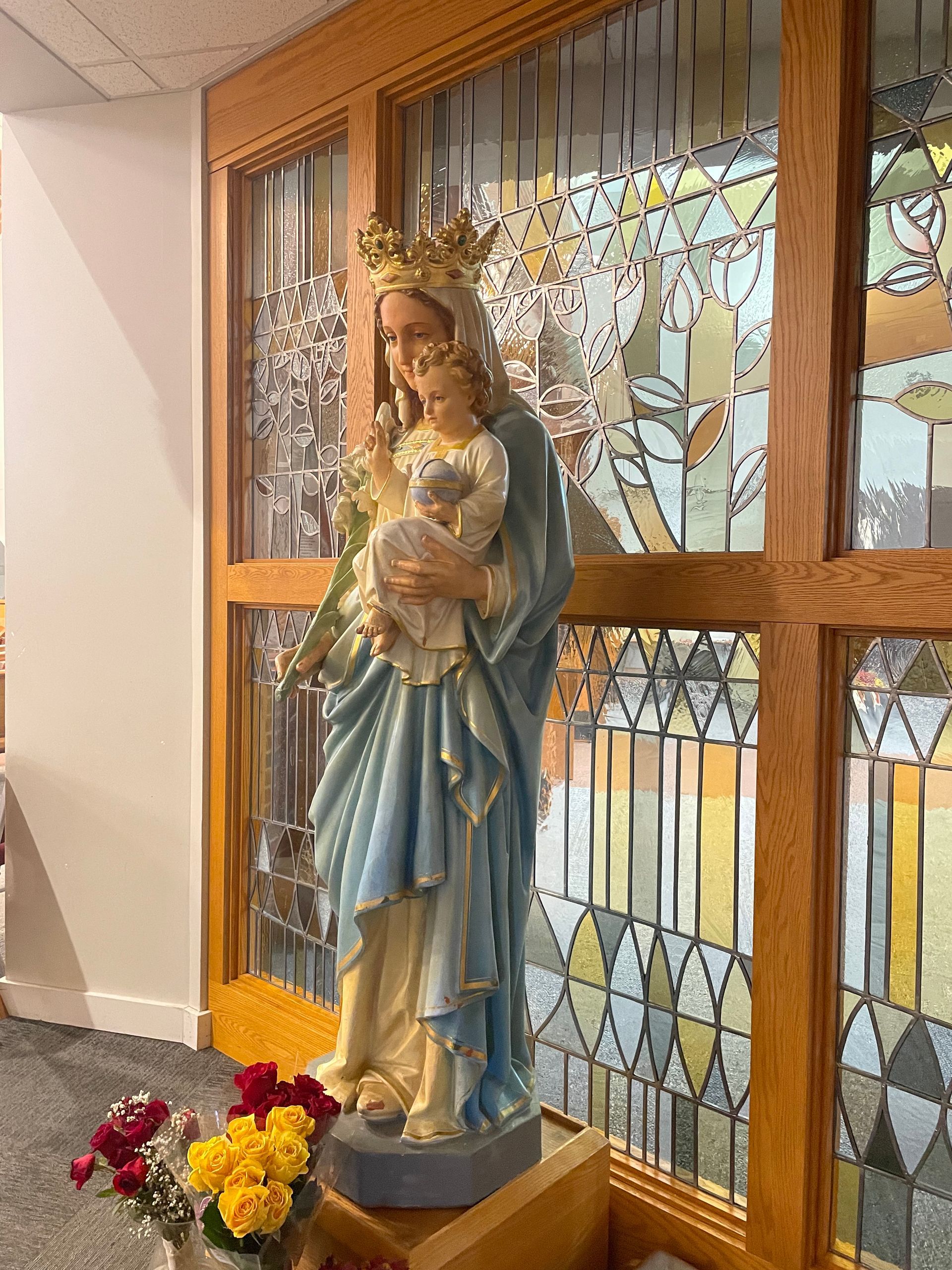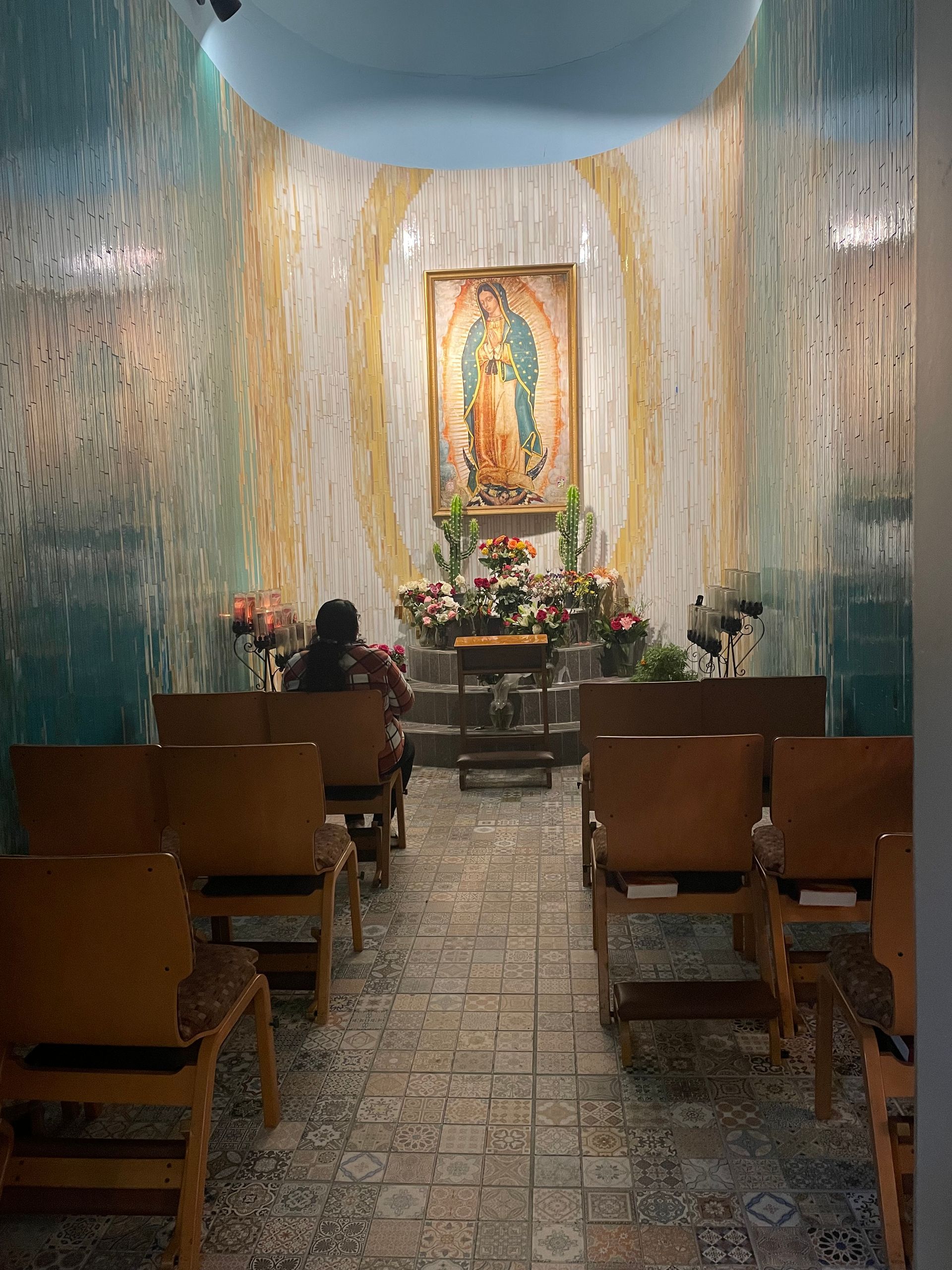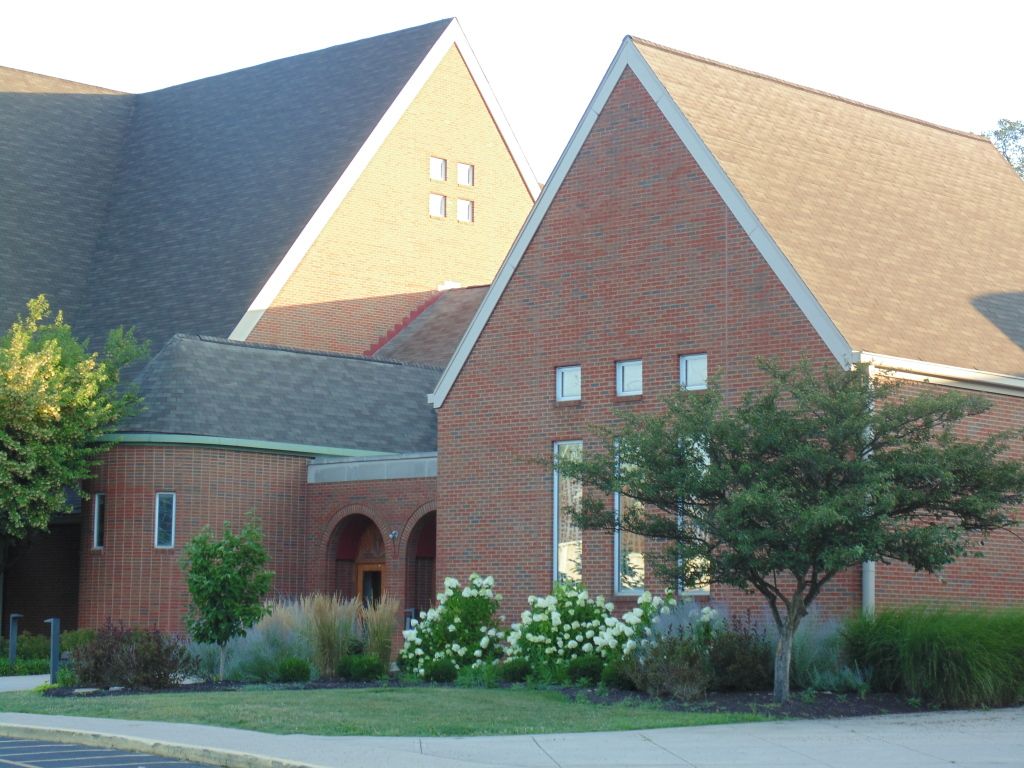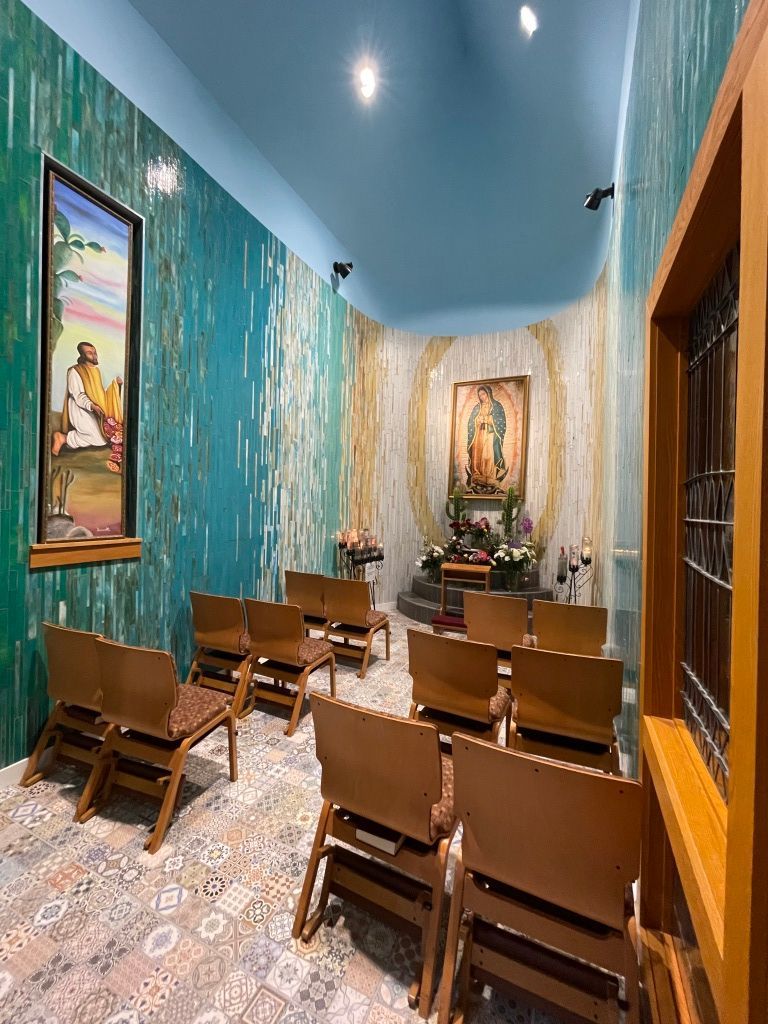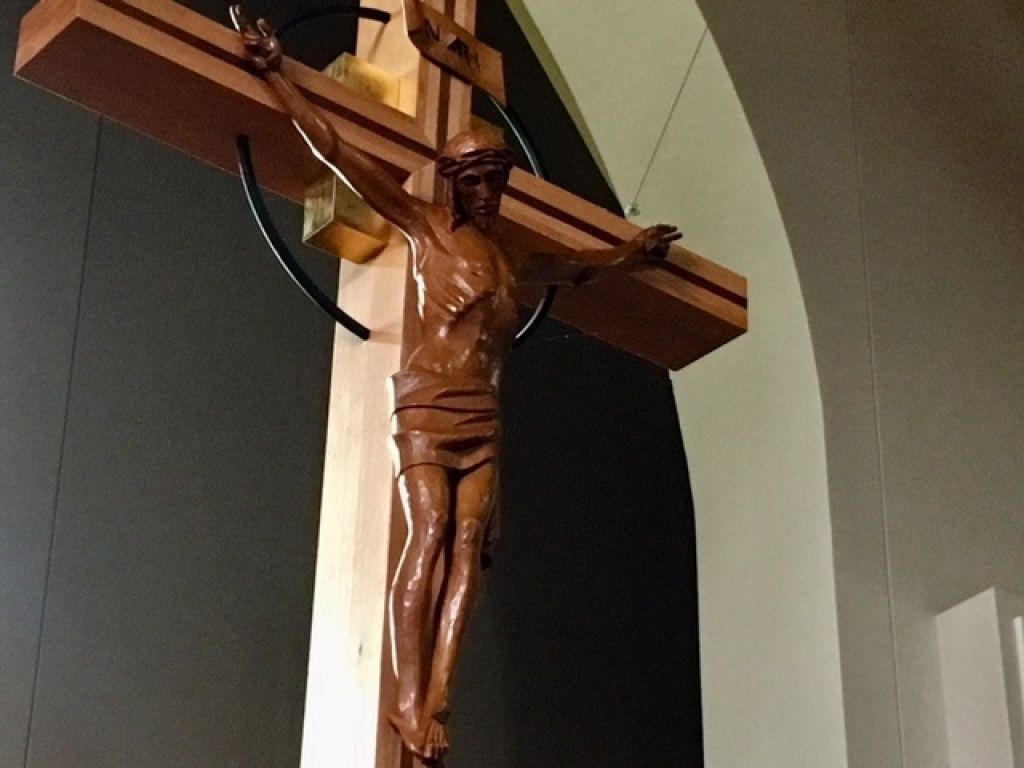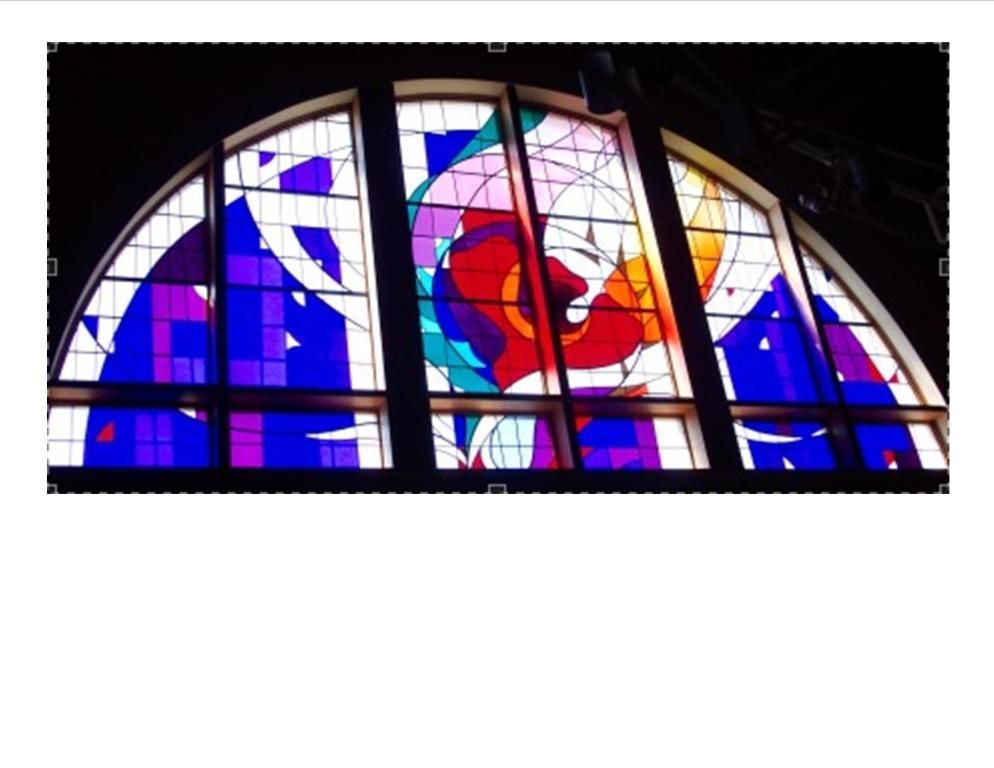The former Blessed Sacrament space was then turned into a devotional chapel in honor of Our Lady of Guadalupe, who was declared Patroness of the Americas by Pope Pius XII in 1946. The framed image of Our Lady of Guadalupe is an authentic, life-sized reproduction of the miraculous image in Mexico, and was acquired directly from the Basilica of Our Lady of Guadalupe in Mexico City. The stained-glass windows located just outside of the chapel were also designed by Br. Martin, and depict the roses in bloom that are always associated with Our Lady of Guadalupe. The chapel can be accessed from the Narthex or from inside the sanctuary.
Near the sanctuary entrance to the Guadalupe Chapel is the Reconciliation Room. The Reconciliation Room provides a private place for priest and penitent to celebrate the Sacrament of Reconciliation. Penitents have the option of receiving the sacrament anonymously behind a screen, or they can speak directly to the priest face to face.
Our sanctuary is where the parish family gathers to hear the Word of God, to offer prayers individually and together, and to celebrate the holy mysteries of the Mass. Seating in the main sanctuary is curved to bring the altar closer to the people. This emphasizes our unity as a parish and the centrality of Eucharist in our lives. The sanctuary seats up to 780 people.
The Narthex entrance to St. Monica was designed to provide a spacious, hospitable gathering area for our community to use before and after Masses. The gathering space was a primary feature identified by parishioners as very important to our community. At the Narthex entrance to the Sanctuary, the flowing water of the baptismal font reminds each person entering the church of our commitment as Christians. It is symbolically placed at the entrance to the church where our lives as Christians begin.
The altar is the center of the church, the stone upon which is offered the sacrifice of the Mass, as Christ is the center of our lives and the foundation of our faith. Our altar includes a white marble slab that holds relics of Saints Boniface and Bonono as a physical reminder of our communion with all Christians through the ages and especially of those in heaven who pray for us. (We know that St. Boniface was from England and was an apostle to Germany, where he was martyred. We have not been able to find out the history of St. Bonono, but we revere him or her as an example of the "unsung saints" among us whom we encounter every day.) The surface of the stone is etched with five crosses to remind us of the wounds of Christ. The celebrant kisses this stone at the opening of each Mass. The altar area was designed with ramps to be accessible to priests and parishioners who are physically handicapped. In the wall behind the altar, four windows form a cross to remind us of the four Gospels and of Christ's directive to his disciples: Go forth and spread the Gospel to the four corners of the world.
The Cross is a basic Christian symbol and is prominent in church architecture, art, rites, and traditions. Carried in processions, it is a reminder of Christ's death and resurrection, of his invitation to his followers to pick up the cross and follow him. In our sanctuary, the large wooden crucifix over the altar, also designed and created by Br. Martin, incorporates the hand-carved corpus and titulus from the original crucifix that had been donated by charter members of the parish for the original St. Monica sanctuary in 1956.
The organ for the main sanctuary was designed by Tom Magee of the Rodgers Classic Organs in Indianapolis, and built in Hillsboro, Oregon. It is a two manual instrument with 49 stops and has the capability of adding actual organ pipes in the future. A computerized Sequencer-Sound Module attached to the console adds more than 300 additional sounds to the organ and will also allow organists to record performances for future replaying.
